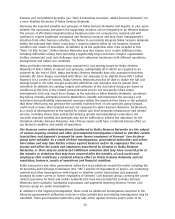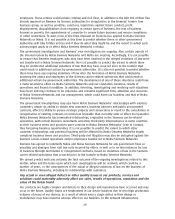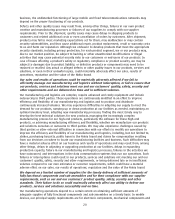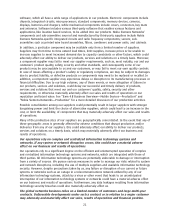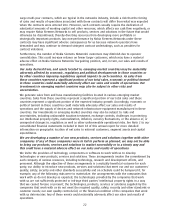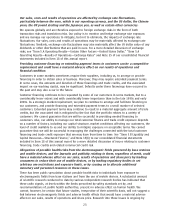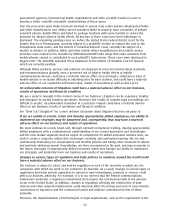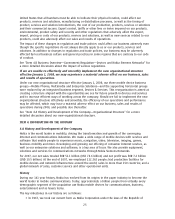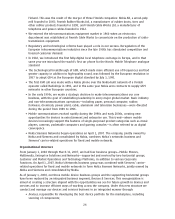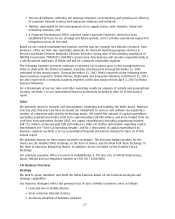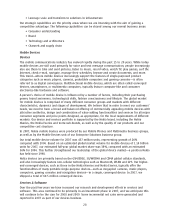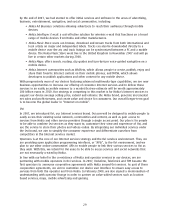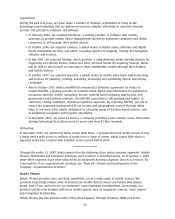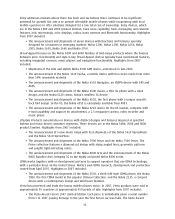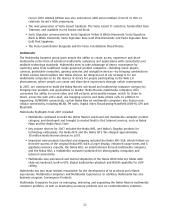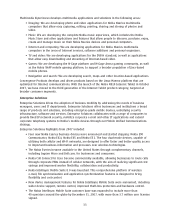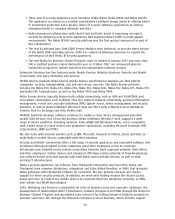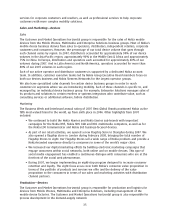Nokia 2007 Annual Report Download - page 29
Download and view the complete annual report
Please find page 29 of the 2007 Nokia annual report below. You can navigate through the pages in the report by either clicking on the pages listed below, or by using the keyword search tool below to find specific information within the annual report.• Leverage scale and transform to solutions in infrastructure
Our strategic capabilities are the priority areas where we are investing with the aim of gaining a
competitive advantage. The following capabilities can be shared among our several business areas:
• Consumer understanding
• Brand
• Technology and architecture
• Channels and supply chain
Mobile Devices
Devices
The mobile communications industry has evolved rapidly during the past 15 to 20 years. While today
mobile devices are still used primarily for voice and text message communication, people increasingly
also use them to take and send pictures, listen to music, record video, watch TV, play games, surf the
Internet, check email, navigate, manage their schedules, browse and create documents, and more.
This trend—where mobile devices increasingly support the features of singlepurposed product
categories such as music players, cameras, pocketable computers and gaming consoles—is often
referred to as digital convergence. Multifunctional mobile devices, which are often called converged
devices, smartphones, or multimedia computers, typically feature computerlike and consumer
electronicslike hardware and software.
A person’s choice of mobile device is influenced by a number of factors, including their purchasing
power, brand awareness, technological skills, fashion consciousness and lifestyle. The global market
for mobile devices is comprised of many different consumer groups and markets with different
characteristics, dynamics and stages of development. We believe that in order to meet our customers’
needs, we need to have a broad and balanced offering of commercially appealing mobile devices with
attractive aesthetics, design and combination of valueadding functionalities and services for all major
consumer segments and price points designed, as appropriate, for the local requirements of different
markets. Our device and services portfolio is supported by the Nokia brand, including the Nokia
Nseries, the Nokia Eseries and Vertu subbrands, as well as by the quality of our products and our
competitive cost structure.
In 2007, Nokia mobile devices were produced by our Mobile Phones and Multimedia business groups,
as well as by the Mobile Devices unit of our Enterprise Solutions business group.
Our total mobile device volume for 2007 was 437 million units, representing growth of 26%
compared with 2006. Based on an estimated global market volume for mobile devices of 1.14 billion
units for 2007, our estimated fullyear global market share was 38%, compared with an estimated
36% for 2006. This further strengthened our leadership of the global device market—a position Nokia
has held since 1998.
Nokia devices are primarily based on the GSM/EDGE, 3G/WCDMA and CDMA global cellular standards,
and also increasingly feature noncellular technologies such as Bluetooth, WLAN and GPS. Our higher
end converged devices, such as those in the Nokia Nseries and Nokia Eseries, typically offer the
functionalities of many portable singlepurpose devices—such as megapixel cameras, music players,
computers, gaming consoles and navigation devices—in a single, converged device. In 2007, we
shipped a total of 60.5 million converged devices.
Services & Software
Over the past few years we have increased our research and development efforts in services and
software. This area continued to be primarily in an investment phase in 2007, and we anticipate this
will continue to be the case for 2008 and 2009. Some incremental net sales were generated and
reported in 2007 as part of our devices business.
28


